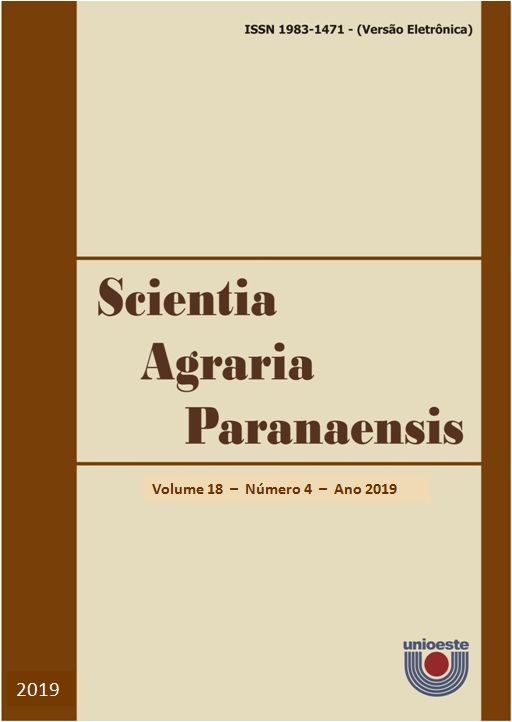Production of BRS Itaim cowpea cultivar based on plant population density
DOI:
https://doi.org/10.18188/sap.v18i4.22100
Agências de fomento
Resumo
Cowpea has great potential for cultivation and rotation in Mato Grosso State and in Brazilian Cerrado due to the large area available in these locations in the off-season. The aim of the current study is to analyze the yield of cowpea (BRS Itaim cultivar) grown in non-irrigated soil in Sorriso County-MT, based on plant population density. The experiment was carried out in commercial area, on March 8, 2015; it followed a randomized block design, with six population densities and four replicates. Population densities comprising 80, 120, 160, 200, 240, and 280 thousand plants per hectare were used in the experiment. Experimental plots encompassed four 5-meter-long rows with 0.45-meter spacing between them. Final plant stand (plants ha-1), number of pods per plant, number of grains per pod, pod length (cm), weight of one hundred grains (g) and grain yield (kg ha-1) in the useful plot were evaluated at harvest time. The number of pods per plant has linearly decreased as population density increased. The number of seeds per pod, pod length and weight of one hundred grains did not change due to population density. Population density of 230 thousand plants ha-1 has enabled the highest grain yield under the tested conditions.Downloads
Publicado
15-12-2019
Como Citar
PIVETTA, L. G.; OLIBONE, D.; SILVA, E. C. da; OLIBONE, A. P.; KERES, G.; JÚNIOR, J. Ângelo N. de M. Production of BRS Itaim cowpea cultivar based on plant population density. Scientia Agraria Paranaensis, [S. l.], p. 377–382, 2019. DOI: 10.18188/sap.v18i4.22100. Disponível em: https://e-revista.unioeste.br/index.php/scientiaagraria/article/view/22100. Acesso em: 31 maio. 2025.
Edição
Seção
Artigos Científicos
Licença
Aviso de Direito Autoral Creative Commons
Política para Periódicos de Acesso Livre
Autores que publicam nesta revista concordam com os seguintes termos:
1. Autores mantém os direitos autorais e concedem à revista o direito de primeira publicação, com o trabalho simultaneamente licenciado sob a Licença Creative Commons Attribution que permite o compartilhamento do trabalho com reconhecimento da autoria e publicação inicial nesta revista.2. Autores têm autorização para assumir contratos adicionais separadamente, para distribuição não-exclusiva da versão do trabalho publicada nesta revista (ex.: publicar em repositório institucional ou como capítulo de livro), com reconhecimento de autoria e publicação inicial nesta revista.
3. Autores têm permissão e são estimulados a publicar e distribuir seu trabalho online (ex.: em repositórios institucionais ou na sua página pessoal) a qualquer ponto antes ou durante o processo editorial, já que isso pode gerar alterações produtivas, bem como aumentar o impacto e a citação do trabalho publicado (Veja O Efeito do Acesso Livre).
Licença Creative Commons
Esta obra está licenciada com uma Licença Creative Commons Atribuição-NãoComercial-CompartilhaIgual 4.0 Internacional, o que permite compartilhar, copiar, distribuir, exibir, reproduzir, a totalidade ou partes desde que não tenha objetivo comercial e sejam citados os autores e a fonte.


